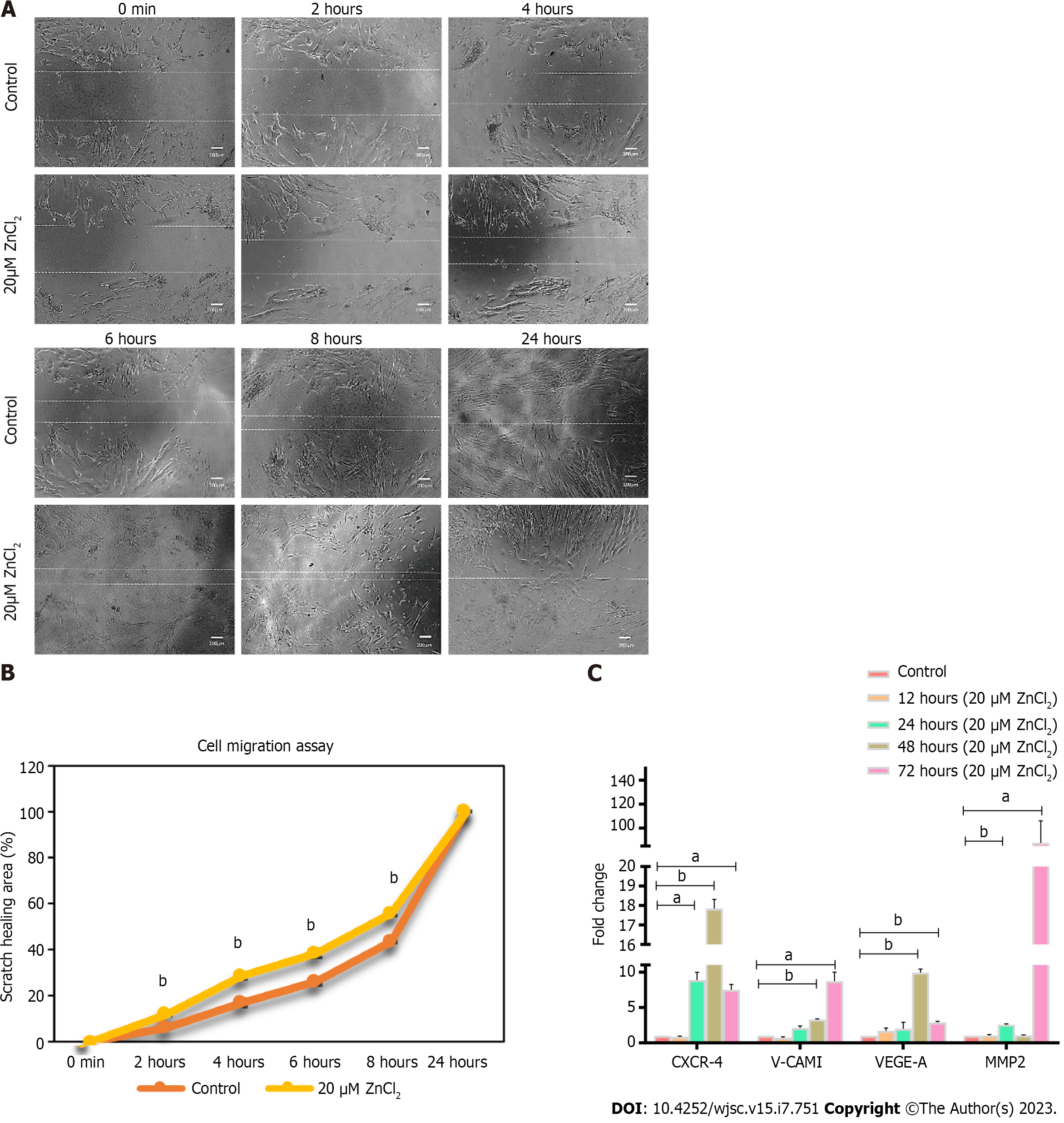Copyright
©The Author(s) 2023.
World J Stem Cells. Jul 26, 2023; 15(7): 751-767
Published online Jul 26, 2023. doi: 10.4252/wjsc.v15.i7.751
Published online Jul 26, 2023. doi: 10.4252/wjsc.v15.i7.751
Figure 5 Effect of ZnCl2 on the migration potential of human umbilical cord-derived mesenchymal stem cells.
A: Microscopic examination of human umbilical cord (hUC)-derived mesenchymal stem cells (MSCs) immediately after the scratch was given, i.e., 0 h, and after 2 h, 4 h, 6 h, 8 h, and 24 h. MSCs of the test group (20 µM ZnCl2) exhibited faster migration as compared to control at all time points up to 8 h, and the scratch was completely healed after 24 h in both groups; B: Percentage of the area of scratch healed at time points, i.e., 0 min, 2 h, 4 h, 6 h, 8 h, and 24 h, analyzed by independent sample t-test. MSCs exhibited a significantly (bP ≤ 0.01) increased migration (Percent) in the test group (20 µM ZnCl2). C: Gene expression analysis of migration factors CXCR-4, V-CAM 1, VEGF-A, and MMP2, after 12, 24, 48, and 72 h of 20 µM ZnCl2 treatment. CRCR-4 exhibited significantly increased expression after 24 h, 48 h, and 72 h of treatment. V-CAM1, and VEGF-A showed significantly higher expression after 48 and 72 h of treatment. MMP2 showed enhanced expression after 24 and 72 h. Results were analyzed by independent sample t-Test. Data was analyzed as mean ± SD (n = 3) where significance level aP ≤ 0.05 (aP ≤ 0.05, bP ≤ 0.01, cP ≤ 0.001).
- Citation: Sahibdad I, Khalid S, Chaudhry GR, Salim A, Begum S, Khan I. Zinc enhances the cell adhesion, migration, and self-renewal potential of human umbilical cord derived mesenchymal stem cells. World J Stem Cells 2023; 15(7): 751-767
- URL: https://www.wjgnet.com/1948-0210/full/v15/i7/751.htm
- DOI: https://dx.doi.org/10.4252/wjsc.v15.i7.751









